by Shane L. Larson
One of the “features” of the modern world is memes percolating through our social media feeds, online browsing, and texts from friends. Sometimes these memes are humorous images, sometimes they are captures of tweets and posts, sometimes they are interesting facts. Let’s spend a few moments considering these last ones.
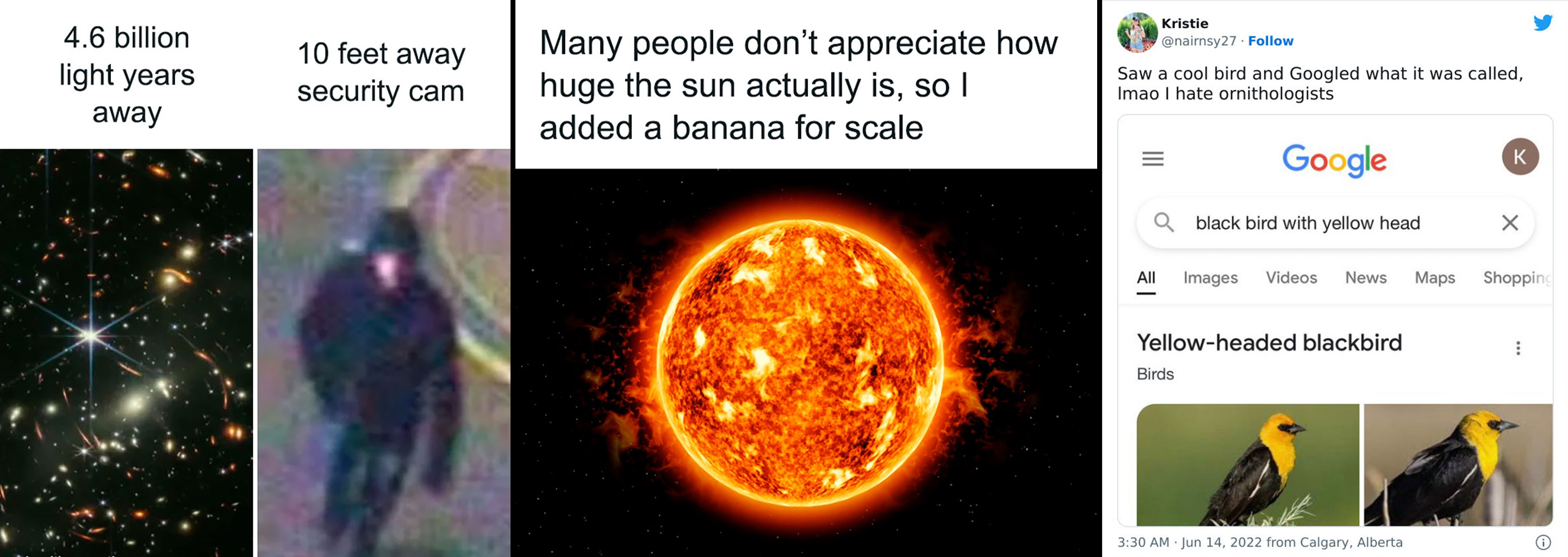
Examples of common memes that relay information or observations about science [Images via your favorite local internet browser].
Memes that relay “interesting facts” are often tidbits of history, trivia, or scientific knowledge that are surprising or provocative. Many of these memes are absolutely correct, yet surprising, and they get rebroadcast over and over again.
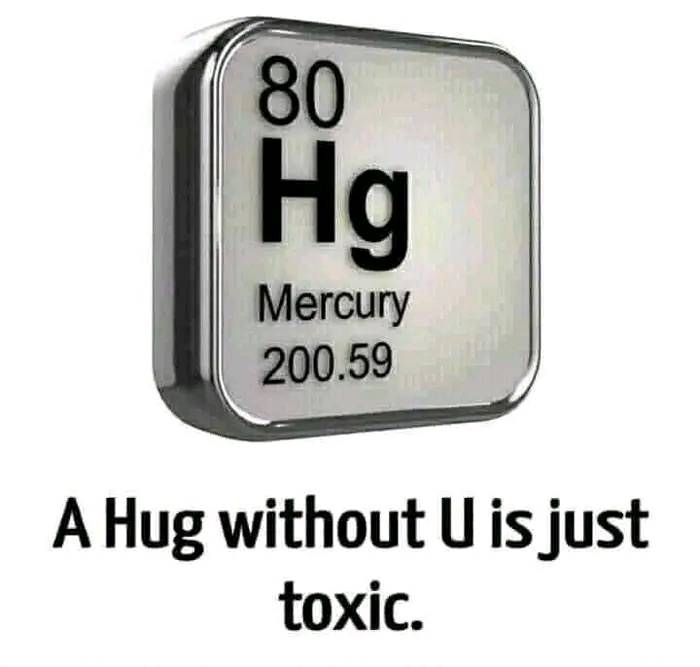
Why are such memes surprising and appealing? Sometimes they remind us of how little we know, or how it used to be when we were in school, or how silly complex questions can sound. They play with our deeply rooted notions of humor, playing word or pun games that juxtapose everyday language against the language of science. Chemistry memes are particularly good at this, where designations for the chemical elements — the 92 naturally occurring substances that the Universe creates everything from — are used to create words or funny turns of phrase. Like this meme about the element mercury, represented by its chemical symbol “Hg” (which comes from the Latin word for mercury, hydrargyrum — literally “liquid silver”).
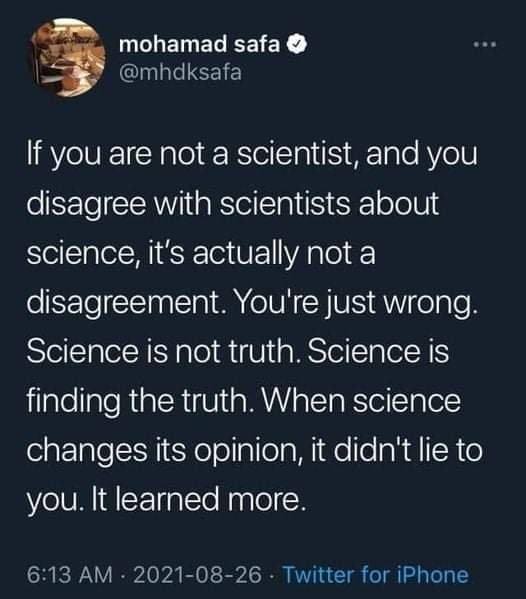
Sometimes the reason is the propositions of science are used as beacons of stability in a world rife with randomness and illogic. Particularly in today’s world, where ideological arguments boiled down to soundbites are casually tossed around without much thought, people long for the ideals of impassioned debate moderated by reason and data. This is of course the standard that science aspires to, so memes promoting such ideals are popular.
But the memes of considerable interest are the ones that give you pause, and provide a delectable moment of cognitive dissonance. They challenge your thinking and world-view about something that seems ordinary, but apparently is not.
Consider this very common repeated science factoid about the color magenta.
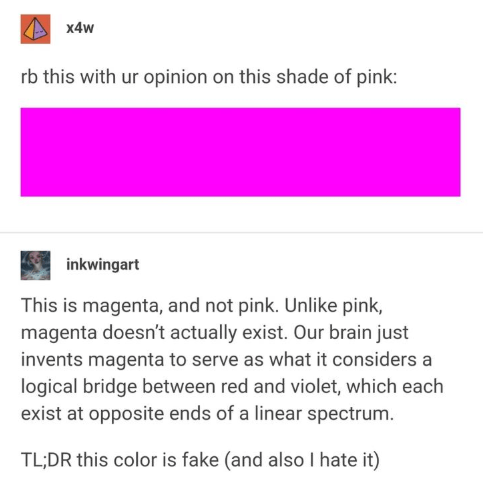
If you are like most people, you may read this and go, “What? WTF does this mean? Of course magenta exists! Look at this shade of lipstick right here!”
But to understand what is going on here, we have to dissect every little bit of the meme. First, of course “magenta” exists, because that square of color is clearly there, and recognizable in the array of colors people might call “magenta.” But the second part is the piece to consider carefully: it is a color your brain is using to interpolate between red and violet. This is where the science part of this factoid is. It has been presented to drive you into cognitive dissonance, but no effort has been made to really help you understand what it means in the concrete world of science… this is the failure of such memes.
It does, however, illustrate one of the hardest things about science: the imprecision of language. Human language, which we depend on every single day and use as a malleable all-purpose tool, cannot easily convey with precision and accuracy what science has to say about most phenomena in the world. Color is a classic example. What does a scientist mean if they make a pithy statement like “magenta does not exist”? They mean something very precise, but the language of our common vernacular means something quite different.
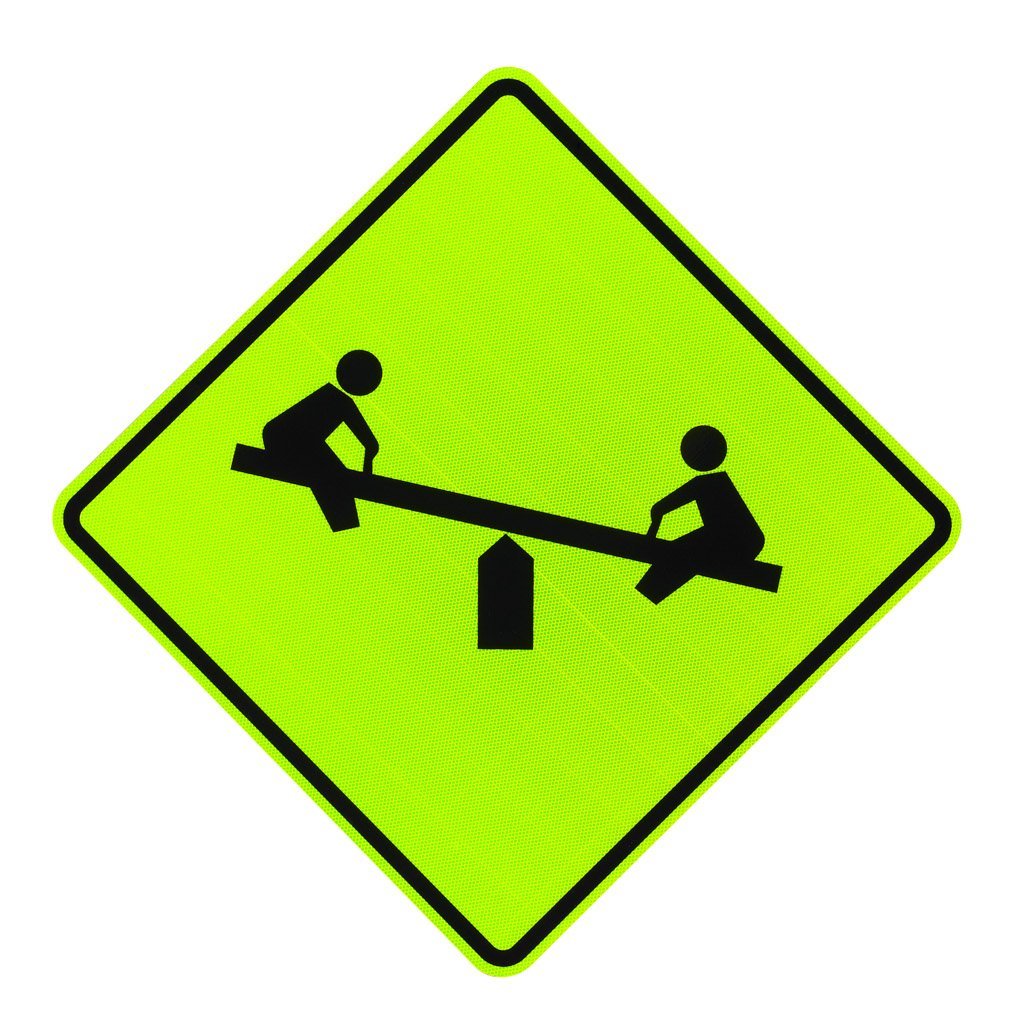
Consider the color in this image. What color do you name this? Show it around to family and friends and ask them what color they call it. You will get a wide range of answers: green, yellow-green, fluorescent green, fluorescent yellow, fire-engine green, safety-vest yellow. Well, what color is it? We all recognize this color, but there is no universal name for it, though using any of these names mentioned, and a few examples, would quickly firm up the color under discussion in conversation.
But that isn’t precise enough or good enough for science. Scientists need to know exactly what color is under discussion — perhaps they are trying to create an LED light to create that color, or making a sensor that responds only to that particular color when it is scanned. In this case, this color is very close to the dominant color of light shed by our parent star, the Sun — the reason we use this color for attention and safety is your eye has evolved over millions of years to be sensitive to this color.
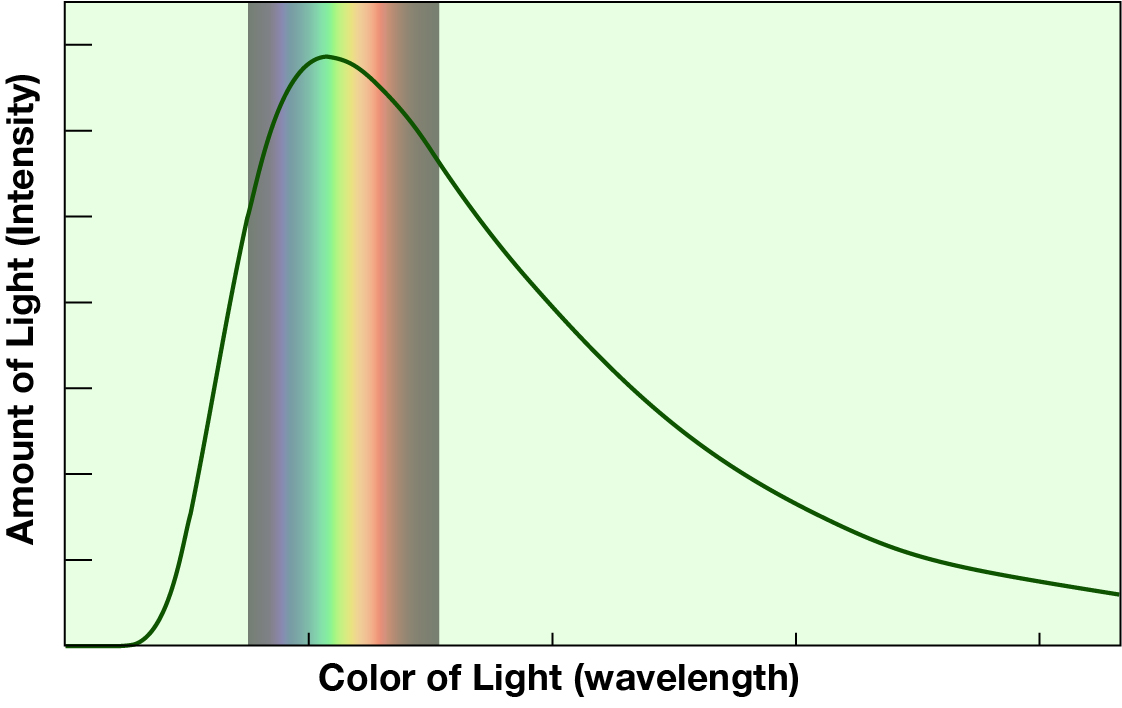
The “blackbody spectrum” of the Sun. The hill-shaped curve shows how much light the Sun emits in each color, and it peaks in the “safety-vest yellow” range of colors (at a wavelength of 500 nanometers). [Image: S. Larson]
So what do scientists do, when language isn’t up to the task? We layer on a bit of mathematics. In the case of color, physicists use a number called wavelength (often denoted by a lower case Greek letter lambda: λ). In the classic rainbow spectrum of light, cast by raindrops or sun-catcher prisms, or bevels on your windows, every single color has a unique number that scientists use to identify it.

The approximate colors and associated wavelengths of light that are visible to the human eye (the “visible spectrum”). [Image: S. Larson]
In the communication of scientific ideas, this ability to clearly and unambiguously quantify something is critical. Consider the following two conversations about color:
Conversation 1:
Father: I put your red jacket in the closet.
Daughter: I don’t have a red jacket.
Father: Yes you do, you wear it every day.
Daughter: Pop! That is burgundy.
Father: <blank stare>
Conversation 2:
Astronomer 1: It was too red to show in the image.
Astronomer 2: The camera should have picked it up.
Astronomer 1: The wavelength was around 720 nanometers.
Astronomer 2: Oh, you mean really red.
As astronomers, we still depend on language just like everyone else, but we have a mechanism to fall back on more precise statements and specifications needed to understand the world around us. In the case of color, that is wavelength.
But what about the magenta? What does it mean that it “doesn’t exist”? It means that for a scientist, there is no quantifiable number — no wavelength — that identifies where in the spectrum of light the color you and I call “magenta” can be found. It cannot be found in the spectrum! Yet it clearly exists when you and I stare at this little colored square. It is, in fact, a mixture of pure colors from the spectrum — the violet and the red mentioned in the original meme.
In the rainbow spectrum, where each color has its own unique numeric label, if you take a bit the violet color, and mix it with a bit of the red color, and throw that light at your eye, your brain says “whoa! look at that magenta!”
In many ways, the meme is being dishonest to get a shock out of you. The amount of violet and red to be mixed can be quantified to make different shades of magenta — otherwise printers and lipstick makers would have a much rougher time making things this color! There is an exact, quantifiable way to specify every shade of magenta you put on the table.
Nature can make magenta, but Nature doesn’t make magenta as a fundamental building block.
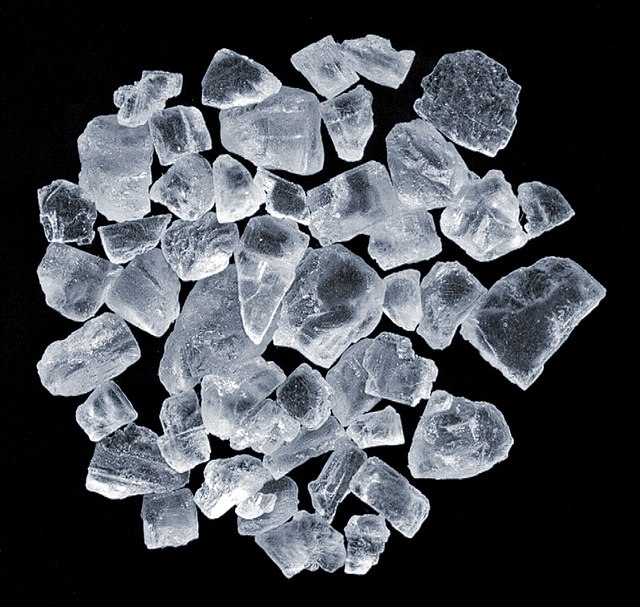
Salt crystals are not fundamental objects; salt itself is a combination of fundamental elements, sodium and chlorine. [Image: Wikimedia Commons]
It’s no different than elemental chemistry. “Salt” does not exist on the periodic table, but salt clearly exists in the same way magenta exists. In the fundamental, quantifiable world of the chemical elements (the building blocks of which everything on Earth is made), there are two uniquely identified substances: one is called sodium (Na) and one is called chlorine (Cl), and when I bond them together, I get something that is not elemental, but a mixture that we call NaCl — sodium chloride, or “salt.”
Saying something “doesn’t exist” has a multitude of interpretational meanings, but it means something very specific and very precise. In the context we’ve been discussing here it doesn’t mean you can’t find something you and I would call “magenta” in the Cosmos — it means none of the fundamental building blocks of color, the rainbow of light, are called “magenta.”
This is one of the hardest things about science. Language is evocative and emotional and nuanced and, ultimately, imprecise. And since we are social creatures who in large part think in terms of language and act in response to language, it makes it hard — very hard! — for our brains to engage in the discovery of the world around us with the rational, quantifiable approach of science.
Moreover, it is hard to express personal enthusiasm and joy for the wisdom and knowledge that science has brought our species, when science itself is ideally more grounded — that dichotomy make the communication of science using this ratty tool we call “language” all the more difficult.
But we still try. With a few funny graphics and memes, a few stories and quips, and a few written words like these ones here…
——————————————————-
This post is the first in a short series pondering what kinds of things make science difficult. The posts in this series are:
1: The Hardest Thing About Science – Language (this post)




